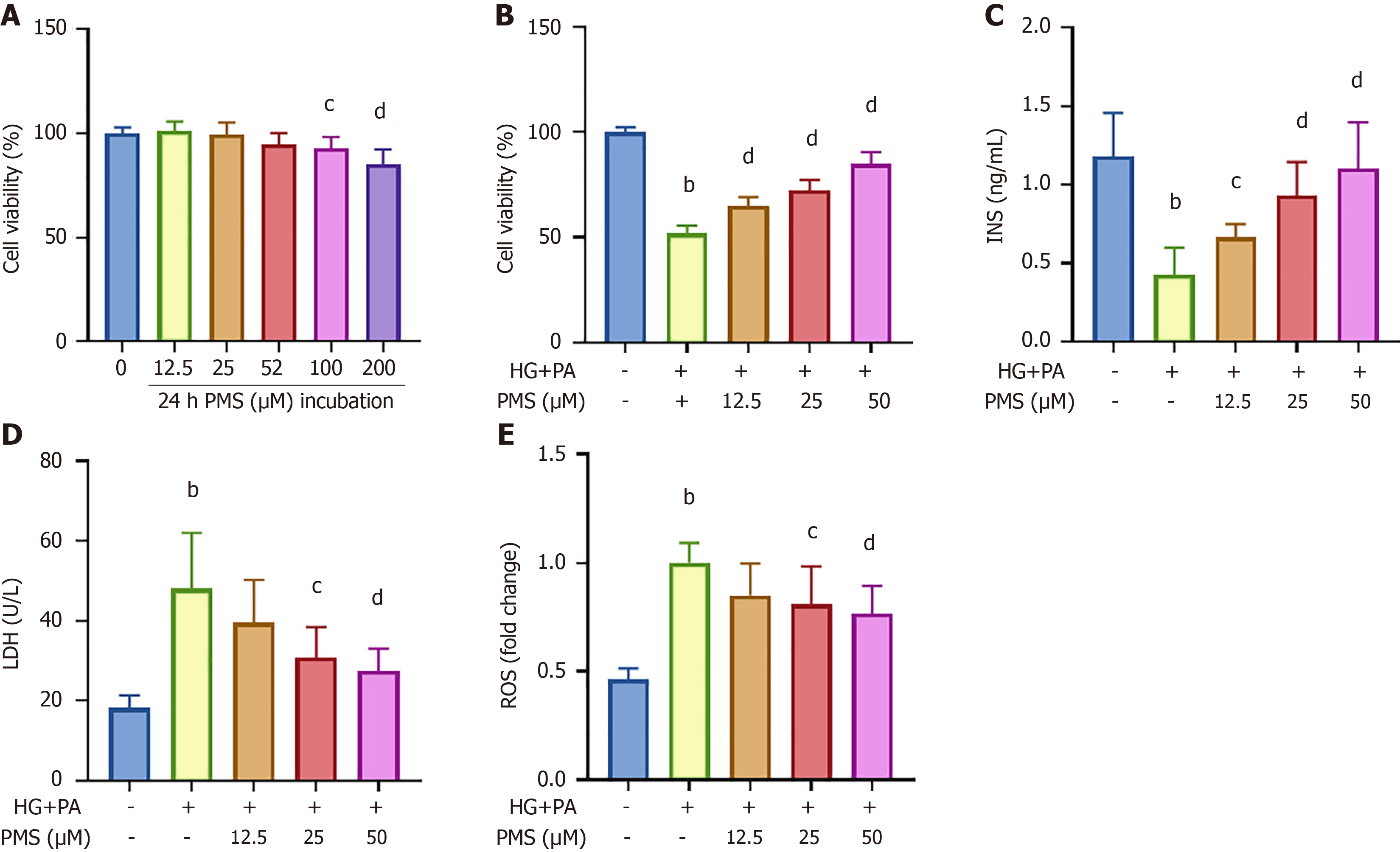Copyright
©The Author(s) 2025.
World J Diabetes. Feb 15, 2025; 16(2): 99053
Published online Feb 15, 2025. doi: 10.4239/wjd.v16.i2.99053
Published online Feb 15, 2025. doi: 10.4239/wjd.v16.i2.99053
Figure 1 Plantamajoside intervention improves high glucose + palmitic acid-induced injury in pancreatic β-cells.
A: MIN6 cells were first treated with plantamajoside (PMS) and then subjected to MTT assay to measure cell viability; B: Subsequently, cells were treated with 40 mmol/L high glucose + 0.4 mmol/L palmitic acid, and concurrently treated with different concentrations of PMS. MTT results indicate that 12.5 μM, 25 μM, and 50 μM PMS did not significantly affect MIN6 cell viability; C: ELISA results showing that PMS intervention increases insulin (INS) levels in the supernatant; D: PMS intervention decreases the activity of lactate dehydrogenase (LDH); E: In the supernatant and reactive oxygen species (ROS) levels within the cells. Data are presented as mean ± SD, n = 6 for A-D. aP < 0.05, bP < 0.01 vs the normal control group; cP < 0.05, dP < 0.01 vs the high glucose + palmitic acid group.
- Citation: Wang D, Wang YS, Zhao HM, Lu P, Li M, Li W, Cui HT, Zhang ZY, Lv SQ. Plantamajoside improves type 2 diabetes mellitus pancreatic β-cell damage by inhibiting endoplasmic reticulum stress through Dnajc1 up-regulation. World J Diabetes 2025; 16(2): 99053
- URL: https://www.wjgnet.com/1948-9358/full/v16/i2/99053.htm
- DOI: https://dx.doi.org/10.4239/wjd.v16.i2.99053









